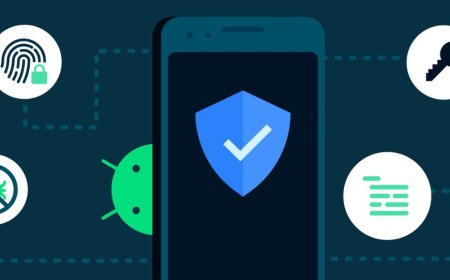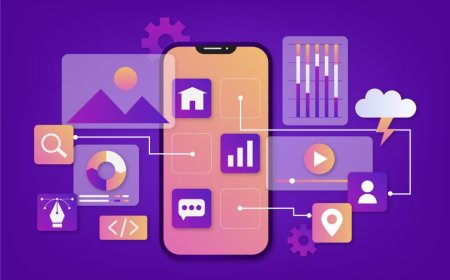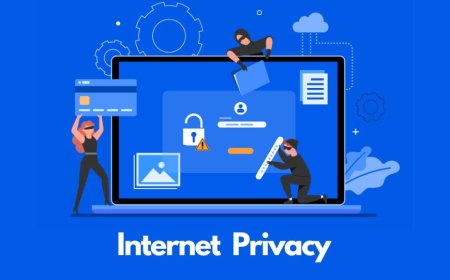Choosing the Right Software: A Comprehensive Guide
Find your ideal software effortlessly with Tectoks' comprehensive guide. Make informed decisions and streamline your processes like never before.

Table of Contents:
-
Introduction
-
Software Selection Process
-
Software Comparison
-
Software Buying Guide
-
Conclusion
1. Introduction
How to Buy Software for Your Business: A Step-by-Step Guide
Are you looking for software to help you run your business more efficiently and effectively? Do you feel overwhelmed by the number of software options available on the market? Do you wonder how to choose the best software for your needs and goals?
If you answered yes to any of these questions, you are not alone. Many business owners and managers face the same challenges and dilemmas when it comes to buying software for their businesses.
Software is a powerful tool that can help you automate your tasks, streamline your processes, improve your performance, and increase your profitability. However, not all software is created equal, and not all software is suitable for your business.
Choosing the right software for your business is a critical decision that requires careful planning, research, and evaluation. You need to consider various factors, such as your budget, your requirements, your expectations, and your vendor’s reputation and support.
But don’t worry; we are here to help. In this blog post, we will guide you through the steps and tips on how to buy software for your business. We will cover the following topics:
-
How to define your needs and goals
-
How to research and compare software options
-
How to request demos and trials
-
How to ask the right questions to the vendors
-
How to make the final decision and purchase
-
How to implement and evaluate the software
By following this guide, you will be able to choose the software that best fits your business and helps you achieve your desired outcomes. You will also avoid the common pitfalls and mistakes that many software buyers make, such as buying the wrong software, paying too much, or getting poor service and support.
So, are you ready to learn how to buy software for your business? Let’s get started!
2. Software Selection Process
The software selection process is a crucial activity that can determine the success or failure of your software project. It involves finding and choosing the best software solution that meets your business needs and goals.
Here are the main steps and tips for the software selection process:
-
Define the requirements. This is the first and most important step, as it lays the foundation for the rest of the process. You need to identify and document your business problems, needs, goals, and expectations from the software. You also need to define the scope, budget, timeline, and criteria for the software project. Some tips for this step are:
-
Involve all the relevant stakeholders, such as end users, managers, IT staff, and executives, in the requirements-gathering process. They can provide valuable insights, feedback, and perspectives on the software's needs and expectations.
-
Sort the requirements according to their importance, urgency, and feasibility. You can use a software requirements template or a software selection checklist to organize and categorize your requirements.
-
Be specific, clear, and realistic about your requirements. Avoid vague, ambiguous, or unrealistic requirements that can lead to confusion, miscommunication, or disappointment later on.
-
Research the options. This step involves finding and exploring the software solutions that are available on the market and that match your requirements. You need to conduct a thorough and objective market analysis to identify potential software vendors and products. Some tips for this step are:
-
Use online resources, such as Software Advice or Gartner, to find and compare software products, read reviews, and get personalized recommendations. You can also use Olive Technologies to leverage the power of AI to streamline the software sourcing process.
-
Ask for referrals from your peers, industry associations, or consultants who have experience or knowledge in the software domain. They can provide you with valuable insights, tips, or suggestions on the software options.
-
Narrow down your options based on your criteria, such as features, functions, price, reputation, and support. You can use a software comparison matrix or a software evaluation scorecard to compare and rank the software options.
-
Request demos and trials. This step involves testing and evaluating the software options in practice. You need to request demos and trials from the software vendors and see how the software works in real-life scenarios. You also need to involve your end users and stakeholders in the testing and evaluation process. Some tips for this step are:
-
Prepare a list of questions and scenarios that you want to test and verify with the software. You can use a software demo checklist or a software trial checklist to guide you through the testing and evaluation process.
-
Assess the software’s performance, usability, reliability, and compatibility with your existing systems and processes. You can use a software performance checklist or a software usability checklist to measure and rate the software’s quality and suitability.
-
Get feedback and opinions from your end users and stakeholders on the software’s features, functions, and benefits. You can use a software feedback survey or a software satisfaction survey to collect and analyze the user’s experience and satisfaction with the software.
-
Ask the right questions to the vendors. This step involves communicating and negotiating with the software vendors and getting more information and clarification on the software. You need to ask the right questions of the vendors, which will help you make an informed and confident decision. Some tips for this step are:
-
Ask questions that are relevant, specific, and meaningful to your software project. You can use a software vendor questionnaire or a software vendor interview guide to prepare and structure your questions.
-
Ask questions that cover all the aspects of the software, such as the features, functions, costs, security, compatibility, scalability, training, installation, support, and contract. You can use a software vendor evaluation matrix or a software vendor scorecard to compare and rate the vendor’s responses.
-
Ask questions that are open-ended, probing, and challenging. You want to avoid yes-or-no answers, vague or generic responses, or exaggerated or unrealistic claims from the vendors. You want to get honest, clear, and detailed answers that demonstrate the vendor’s expertise, credibility, and value proposition.
-
Make the final decision and purchase. This is the final and most critical step, as it involves choosing and buying the best software solution for your business. You need to compare the pros and cons of each software option and select the one that best fits your needs and goals. You also need to review the contract carefully and make sure you understand and agree with all the terms and conditions. Some tips for this step are:
-
Consider all the factors that influence your decision, such as the features, functions, benefits, costs, risks, and trade-offs of each software option. You can use a software decision matrix or a software decision tree to weigh and visualize your options.
-
Negotiate the best deal possible with the software vendor and ask for discounts, incentives, or guarantees. You can use a software negotiation checklist or a software negotiation strategy to plan and execute your negotiation tactics.
-
Sign the contract only when you are fully satisfied and confident with your choice. You can use a software contract checklist or a software contract template to review and verify the contract clauses and fine print.
Here are some examples, case studies, or testimonials that illustrate the software selection process and show the results:
-
How Capgemini Consulting helped a global manufacturer select the best software solution for their Industry 4.0 initiative
-
How Olive Technologies helped a leading healthcare provider streamline their software selection process with AI
-
How Software Advice helped a small business owner find the best software solution for their accounting needs
-
How Mobindustry helped a startup choose the best software development vendor for their mobile app project
-
How Info-Tech helped a large organization select the best software solution for their enterprise resource planning (ERP) system
I hope this helps you understand the software selection process and how to choose the best software solution for your business.
3. Software Comparison
Software comparison is the process of evaluating and contrasting different software products or services based on various criteria, such as features, functionality, pricing, reviews, ratings, etc. Software comparison can help users make informed decisions about which software solution best suits their needs, preferences, and budget.
There are many ways to compare software, but some of the most common methods are:
-
By category: You can compare software based on the general type or purpose of the software, such as CRM, project management, accounting, video conferencing, etc. This can help you narrow down your options and focus on the software that meets your basic requirements.
-
By industry: You can compare software based on the specific sector or domain that the software is designed for, such as education, healthcare, retail, manufacturing, etc. This can help you find software that is tailored to your industry-specific needs and challenges.
-
By function: You can compare software based on the specific tasks or processes that the software can perform or support, such as invoicing, scheduling, collaboration, analytics, etc. This can help you find software that can enhance your productivity and efficiency.
To highlight the software features and benefits, as well as the pros and cons, of each option, you can use the following strategies:
-
Use bullet points: You can use bullet points to list the main features and benefits of each software option, as well as the drawbacks or limitations. This can help you present the information clearly and concisely, making it easier for the reader to compare and contrast the options.
-
Use tables: You can use tables to display the data and information of each software option in a structured and organized way. You can use columns and rows to show the different criteria and options and use colors, icons, or symbols to indicate the differences or similarities. This can help you visualize the information and make it easy for the reader to scan and analyze the options.
-
Use charts or graphs: You can use charts or graphs to illustrate the data and information of each software option graphically and interactively. You can use different types of charts or graphs, such as pie charts, bar charts, line graphs, etc., to show the distribution, proportion, trend, or relationship of the data. This can help you highlight the key points and make it easy for the reader to understand and interpret the options.
To provide links or references to the software websites or reviews for more details, you can use the following methods:
-
Use hyperlinks: You can use hyperlinks to embed the URLs of the software websites or reviews in your text and use descriptive words or phrases to indicate the content or source of the links. This can help you save space and make it easy for the reader to access the links.
-
Use footnotes: You can use footnotes to cite the URLs of the software websites or reviews at the bottom of your page and use numerical or alphabetical symbols to mark the references in your text. This can help you avoid clutter and make it easy for the reader to locate the references.
Here are some examples of software comparison websites that you can use as references or sources for your comparison:
-
G2 | Compare Software and Services: This website allows you to compare software and services based on product alternatives, features, ratings, reviews, and more. You can also browse the most popular categories, explore the trending products, and discover the top alternatives to the products you are interested in.
-
TrustRadius: Software Reviews, Software Comparisons, and More: This website provides you with software reviews, comparisons, and insights from verified users. You can also find the best solution for your business or organization based on filters, categories, features, integrations, and more.
-
Compare Software and Products | Techjockey.com: This website offers you an in-depth comparison between software for all business types based on features, pricing, specifications, reviews, and more. You can also explore some of the most-viewed software comparisons for trending products to find out what’s best for you.
-
Compare Business Software 2023: Reviews and Comparison, SourceForge: This website enables you to compare business software, products, and services based on various criteria, such as category, pricing, features, organization size, organization type, region, user reviews, integrations, and more. You can also filter the results by license, platform, language, and more.
4. Software Buying Guide
A software buying guide is a document or resource that helps users find, evaluate, and purchase the best software solution for their needs, goals, and budget.
A software buying guide can cover various aspects of the software buying process, such as:
-
Define your needs and goals. Before you start looking for software, you should have a clear idea of what problem you are trying to solve, what features and functions you need, and what outcomes you expect from the software. You can use a software requirements template to document your needs and goals.
-
Research and compare software options. Once you have defined your needs and goals, you can search for software that matches your criteria. You can use online resources such as Software Advice or Gartner to find and compare software products, read reviews, and get personalized recommendations. You can also seek referrals from your colleagues, industry associations, or consultants.
-
Request demos and trials. After you have narrowed down your software options, you should request demos and trials from the vendors. This will allow you to see how the software works in practice, test its features and usability, and evaluate its performance and reliability. You should also involve your end users and stakeholders in the demos and trials and get their feedback and opinions.
-
Ask the right questions to the vendors. During the demos and trials, you should ask the vendors questions to help you make an informed decision. Some of the questions you should ask are:
-
How does the software address my specific needs and goals?
-
What is the total cost of ownership (TCO) of the software, including the initial purchase, ongoing fees, maintenance, upgrades, and support?
-
How secure is the software, and what measures do you take to protect my data and privacy?
-
How compatible is the software with my existing systems and processes, and what integrations do you offer or support?
-
How scalable is the software, and how can it accommodate my future growth and changes?
-
What kind of training, installation, and support do you provide, and how do I access them?
-
What is your refund policy, and what are the terms and conditions of the contract?
-
Make the final decision and purchase. After you have gathered enough information and feedback, you should compare the pros and cons of each software option and choose the one that best fits your needs and goals. You should also review the contract carefully and make sure you understand and agree with all the clauses and fine print. You should also negotiate the best deal possible and ask for discounts, incentives, or guarantees.
-
Implement and evaluate the software. After you have purchased the software, you should plan and execute the implementation process, which may involve data migration, integration, configuration, customization, and testing. You should also train your end users and stakeholders on how to use the software effectively and efficiently. You should also monitor and evaluate the software’s performance and impact, and measure its return on investment (ROI). You should also communicate with the vendor regularly and provide feedback, suggestions, or issues. You should also take advantage of the vendor’s support and updates and keep your software up-to-date and secure.
I hope this helps you with your software buying process.
5. Conclusion
Buying software for your business can be a daunting task, but it doesn’t have to be. By following the steps and tips we shared in this blog post, you can make an informed and confident decision that will help you achieve your goals and improve your performance.
To recap, here are the main steps and considerations for buying software:
-
Define your needs and goals
-
Research and compare software options
-
Request demos and trials
-
Ask the right questions to the vendors
-
Make the final decision and purchase
-
Implement and evaluate the software
By doing so, you can benefit from the software’s features and functions, save time and money, enhance your security and compatibility, and scale your business with ease.
Thank you for reading this blog post. We hope you find it helpful and informative. If you have any questions, comments, or feedback, please feel free to leave them below. We would love to hear from you and help you with your software buying process.
Also, if you enjoyed this blog post, please share it with your friends, colleagues, or anyone else who might benefit from it.
What's Your Reaction?










































































